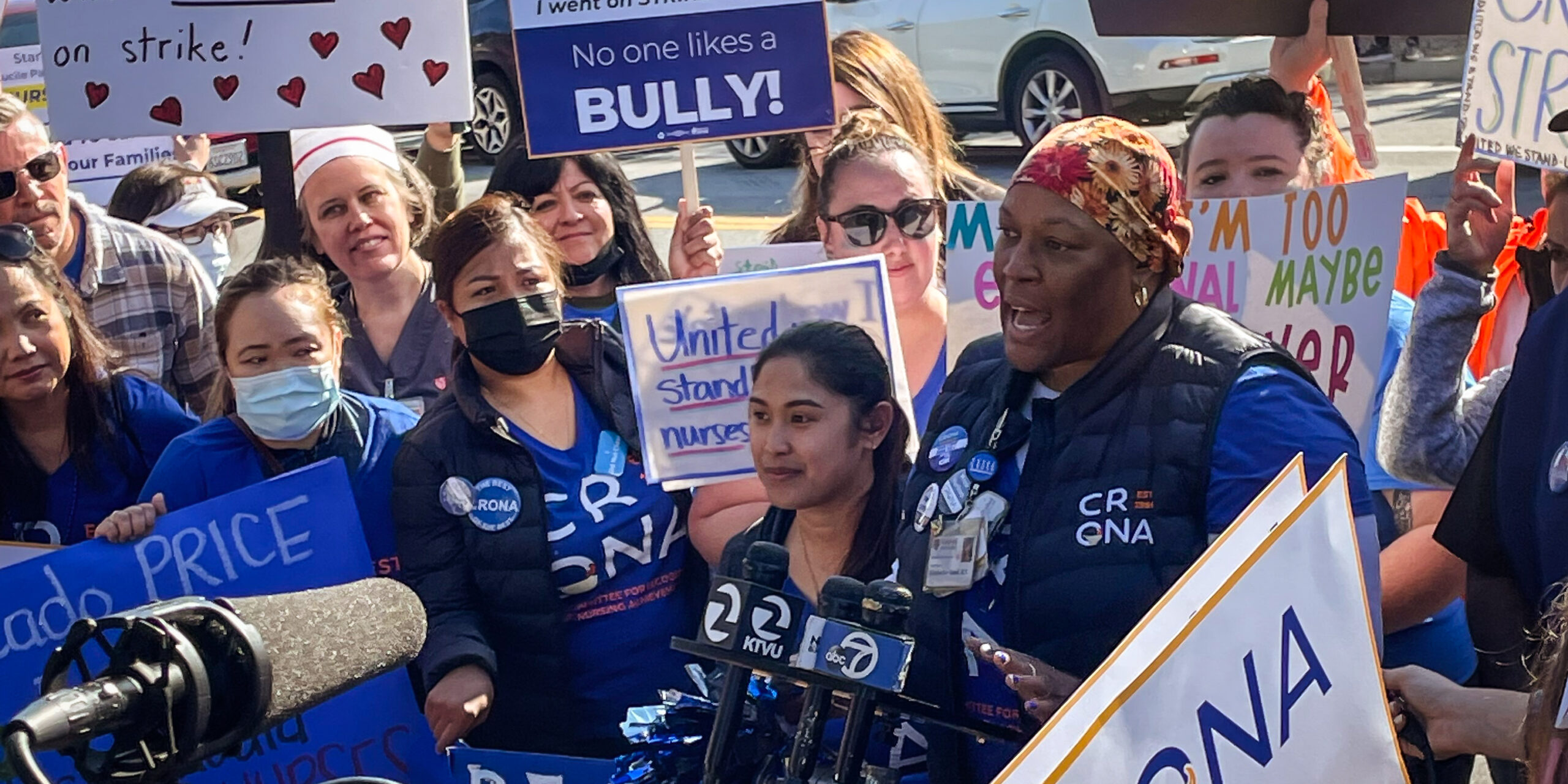Thousands of nurses have been striking outside Stanford Health Care and the Lucile Packard Children’s Hospital in Palo Alto, CA since Monday. They are demanding better pay, higher nurse-patient ratios, and better mental healthcare treatment and prevention for staff members.
The hospitals say they have no choice but to recruit travel nurses to help fill in the gaps until some 5,000 striking nurses agree to come back to work. And some temporary nurses are using the opportunity to score massive paydays as a result.
Striking Out and Cashing In
Nurses from both hospitals have been on strike since last Monday. They are being represented by the Committee for Recognition of Nursing Achievement (CRONA), which said that around 93% of the nurses voted to authorize the strike.
“As one of the nation’s top healthcare systems, Stanford and Packard have an opportunity to demonstrate leadership and work with nurses to solve the burnout and exhaustion that is driving many of us to reconsider our jobs and our profession,” said Colleen Borges, president of CRONA and a pediatric oncology nurse at Packard Children’s Hospital.
“A strike has always been the last resort for CRONA nurses, but we are prepared to stand strong and make sacrifices today for the transformative changes that the nursing profession and our patients need,” she added.
The union failed to reach an agreement with the hospitals after the labor contract expired on March 31.
“Nurses … really want change in the hospitals and the only way to get that is to stand up and fight,” said ICU clinical nurse Kimberley Reed, who’s worked at Stanford for 18 years.
“Things have started to change into more of a business-over-patients kind of situation,” she added.
Dale Beatty, chief nurse executive for Stanford Health Care, said the hospital values its nurses and that the hospital offered a fair contract.
“We feel very strongly about our proposal and we feel very strongly about our package. We believe it’s very generous,” Beatty said. “We’re really interested in settling this and getting our nurses and our union back to the table, so we can negotiate and move forward.”
But the hospital is doing everything it can to attract replacement nurses during the strike. Anyone that crosses the picket line will be paid $13,000 a week plus free food, housing, and transportation.
HSG Strike Staffing is one of several healthcare staffing agencies trying to recruit workers during the strike, but reports show these kinds of companies have been making record profits throughout the pandemic.
Many permanent nurses all over the U.S. have left their jobs to become travel nurses to earn a higher rate of pay, but this only contributes to the nursing shortage by putting extra pressure on existing staff members. Studies show the pandemic increased the number of patients coming in for care by nearly 20%, and the average rate of pay for travel nurses jumped around 67% from March 2020 to March 2022. For many nurses, watching their colleagues leave in search of better pay only hampers nursing morale.
When thousands of nurses go on strike, hospitals usually go to extreme lengths to find replacements.
“Stanford can’t say, ‘Oh, well, I’m just going to borrow some nurses from, say, Valley Medical Center, because they probably have extra,’” said health economist Joanne Spetz, professor at UC San Francisco’s Institute for Health Policy Studies.
The hospital also has to pay the staffing agency. In most cases, around 75% of the fees go towards the nurse and another 25% goes to the staffing agency.
Stanford has already hired around 2,700 temporary workers to fill in for the 5,000 striking nurses. HSG and other recruitment agencies started flying in replacement nurses from all over the country as soon as the union announced the strike in early April.
HSG shuttles the replacement nurses to work where they cross the picket lines each day. The replacements stand to earn around $216.67 an hour, which is 2.5x more than what regular clinical nurses make at Stanford. Permanent staff nurses were used to earning just $87 to $89.50 an hour by comparison.
Nurse leaders from CRONA say they are in the process of negotiating with hospital management, but the nurses say they are willing to go on strike indefinitely until these issues have been resolved.
But many industry experts say healthcare staffing agencies are taking advantage of the situation by charging exorbitant fees. Private equity firms have also started buying up healthcare staffing agencies in hopes of making a profit.
“Demand exceeds supply,” said George Washington University School of Nursing professor Tony Yang. “They can do this because they can get away with it.”
But Stanford says it has no choice but to hire temporary workers until the strike is over.
“We have to continue to provide and support our patients with the same high quality care and assure that they’re safe,” Beatty said.
“Certainly, the fees do worry us,” he said. “But our top priority has to be quality and patient safety. When you’re in a strike situation, we have to have the resources to care for our patients.”
Many of the replacement nurses arrived just last week after flying into San Francisco International Airport.
Upon arrival, each nurse gets reviewed one-on-one by Stanford staff to make sure they are a good match for their position.
“Sometimes we can have individuals that can come in to provide critical care, but they may not have a specific skill for within that population,” Beatty said. “So, we assess to see if they can make that adjustment. … We can certainly reassign them to another location.”
Each replacement nurse is guaranteed payment – even if the Stanford strike ends earlier than expected.
“If you get on the plane, they gonna pay you,” one nurse wrote on Facebook.




